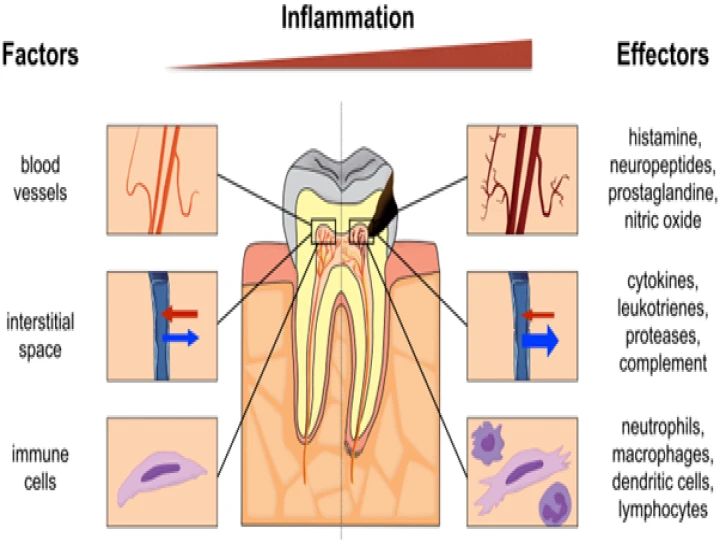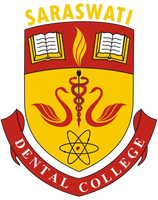
Biological markers for pulpal inflammation
INTRODUCTION- Pulp inflammation is induced by a variety of causes: dental caries, irritation by chemicals, mechanical irritation or trauma caused by occlusion or orthodontic movement of the teeth. The decision to perform vital pulp therapy or to extirpate the pulp is based on the clinician’s diagnosis regarding the inflammatory status of the pulp.
Currently, five non-invasive pulp diagnosis methods are broadly recognized: cold pulp test, heat pulp test, electric pulp test (EPT), laser Doppler flowmetry (LDF), and pulse oximetry (PO). These methods, especially the latter two, are highly accurate in testing pulp vitality . Importantly, the main purpose of these tests is to diagnose pulp vitality, not necessarily to distinguish reversible from irreversible pulpitis.
A series of inflammatory events are triggered to start the repair process of pulpal inflammation. The role of several players of the host response in pulpitis is well documented: cytokines, proteases, inflammatory mediators, growth factors, antimicrobial peptides and others contribute to pulpal defense mechanisms; these factors may serve as biomarkers that indicate the status of the pulp and to distinguish reversible from irreversible pulpitis.
The most common molecular mediators of inflammation present in pulp tissue, blood, GCF and dentinal fluid are:
· Matrix Metalloproteinase-8 - MMP-8 is detected in inflamed pulp and periapical root-canal exudates . Higher MMP-8 is included in dentin samples from reversible or irreversible pulpitis patients
· Chemokine (C-X-C Motif) Ligand 8/Interleukin-8 (CXCL8/IL-8) - IL-8 is significantly increased in dentinal fluid of reversible and irreversible pulpitis compared to normal pulp, it can be useful for diagnosis of pulpitis
· Substance P and Neurokinin A - SP and NKA (neurokinin A, described below) are the members of tachykinin family, which are involved in neuronal excitation, vasodilatation, plasma extravasation, nociception, and proinflammatory actions on immune and inflammatory cells. Several studies have shown by ELISA and radioimmunoassay that SP and Neurokinin A is significantly increased in inflamed pulp tissues.
· Matrix Metalloproteinase-9 - MMP-9 is barely detectable in the healthy dental pulp, however, it is strongly increased in the dentinal fluid of inflamed pulp tissues with a disease, such as irreversible pulpitis.
· Interleukin-6 - IL-6 is a cytokine synthesized mainly by macrophages and monocytes at sites of inflammation, which contributes to host defense in the acute phase immune response. several articles have shown IL-6 is upregulated in the tissues of irreversible pulpitis.
· Tumor Necrosis Factor Alpha - TNFα is highly expressed in inflamed dental pulp tissue . TNFα is increased in the dentinal fluid of reversible and irreversible pulpitis (28)
CONCLUSION
Diagnosis of status of pulp tissue will help in determining the treatment plan , so the importance of identifying such biomarkers is obvious, given the increasing need for vital pulp therapy. The most promising candidates are MMP-8, IL-8, Substance P, and Neurokinin A. In the future, comprehensive gene profiling of pulp and gingival tissue in inflammatory conditions and the development of protein detection technologies may aid in the identification of pulpitis specific proteins .


No Any Replies to “Biological markers for pulpal inflammation”
Leave a Reply